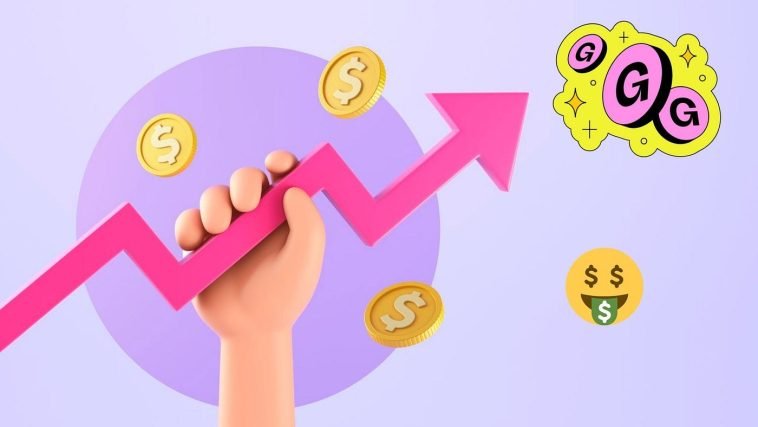If you’ve ever tried selling digital or handmade products online, you’ve probably come across Gumroad and Etsy. They’re both great platforms for creators—but the real question is: which one actually helps you make more money?
This question has become even more relevant as more people are turning their skills into income streams.
From digital artists and writers to craft makers and course creators, everyone wants to know which platform will give them the best return for their effort.
I’ve used both platforms, and in this post, I’ll walk you through how they compare in terms of earning potential, fees, flexibility, and audience—so you can make an informed choice based on your goals.
Understanding the Basics
Before comparing earnings, it helps to know what each platform is built for.
Gumroad is designed for digital creators. Think eBooks, design templates, music, videos, software, and online courses.
It’s simple, minimalist, and gives you full control over your pricing and audience. You can even sell physical items, but digital products are where Gumroad shines.
Etsy, on the other hand, is a marketplace for handmade, vintage, and creative products. While digital downloads are allowed, most buyers go to Etsy looking for physical goods—like crafts, jewelry, home décor, or personalized gifts.
So, while Gumroad and Etsy both allow creators to sell, the types of audiences they attract—and how you make money—are quite different.
The Key Question: Which Makes More Money?
Let’s look at this from four angles that affect your earnings directly: fees, visibility, audience, and control.
1. Platform Fees
Etsy Fees:
Etsy’s pricing structure can get complicated. You pay:
$0.20 per listing (every 4 months)
6.5% transaction fee on every sale
3% + $0.25 payment processing fee (U.S. sellers; varies by country)
Optional advertising fees (for Etsy Ads or Offsite Ads)
These small percentages add up. If you sell a $20 handmade item, Etsy might take around $2–$3 after all the cuts. And if your product requires materials or shipping, your profit drops even more.
Gumroad Fees:
Gumroad keeps it simple.
10% flat fee per sale (for free accounts)
If you’re on a premium plan ($10/month), the fee drops to 3.5% + 30¢ per sale
For digital products, Gumroad’s structure is often cheaper, especially once you start selling regularly. Plus, no listing fees or ads. You just pay when you make money.
Verdict:
If you sell digital products, Gumroad usually leaves more money in your pocket. But if your main products are physical goods, Etsy’s fees might still make sense because it brings in organic buyers (more on that next).
2. Built-In Audience and Traffic
This is where Etsy shines.
Etsy is a massive marketplace with millions of shoppers browsing every day. If you list your product with good keywords, you can get organic traffic from day one—even without running ads. Etsy’s built-in audience is great for beginners who don’t yet have a following or email list.
Gumroad, by contrast, is not a marketplace. It doesn’t drive traffic for you. It’s a tool—you create your page, but you’re responsible for bringing in your own buyers through social media, email marketing, or ads.
If you already have an audience (like a following on YouTube, Instagram, or X), Gumroad can be far more profitable because you keep more of the revenue and maintain full ownership of your customers.
Verdict:
Beginners or handmade sellers: Etsy gives you immediate visibility.
Creators with a following: Gumroad helps you earn more per sale.
3. Product Control and Branding
Etsy limits how much you can customize your shop. Every store looks somewhat similar, which is good for consistency but not great for branding.
You can upload a logo, banner, and photos—but it still feels like you’re renting space in Etsy’s marketplace.
Gumroad, however, lets you brand your store freely. You can customize your product pages, add your own domain, and build direct relationships with buyers through email and follow-up messages.
That’s a big deal because it helps you grow a long-term business. On Etsy, customers are Etsy’s customers first. On Gumroad, they’re yours.
Verdict:
If you want to build a recognizable brand and nurture repeat buyers, Gumroad gives you more control.
4. Product Type and Pricing Freedom
Etsy’s audience often expects lower-priced items, especially when buying physical goods. Competing sellers can also drive prices down.
If you’re selling digital downloads like planners, templates, or art prints, you’ll often see others offering similar items for $3–$10.
Gumroad, meanwhile, attracts creators selling value-based digital products—like online courses, memberships, or software tools.
Pricing here is much more flexible. You can sell a course for $99 or a lifetime license for $200, and no one blinks.
Verdict:
Gumroad is better suited for higher-value digital products, while Etsy is better for lower-cost handmade or printable items.
Real-World Example
Let’s say you create digital planners.
On Etsy, you might price one at $7. You’d get exposure quickly, but you’d pay around $1–$1.50 in fees per sale, leaving you about $5.50. You’ll also face lots of competition and might need to run ads to stay visible.
On Gumroad, you might sell the same planner for $10 directly to your audience. With a 10% fee, you keep $9 per sale. Plus, you can bundle it with other products or offer discounts without extra listing costs.
If you can drive your own traffic, Gumroad almost always results in more profit long-term.
Who Makes More Money on Each Platform?
Here’s a quick breakdown:
| Type of Seller | Better Platform | Why |
|---|---|---|
| Beginners with no audience | Etsy | Built-in buyers and search traffic |
| Digital product creators | Gumroad | Higher margins and brand control |
| Handmade craft sellers | Etsy | Ideal for physical, creative goods |
| Influencers or creators with followers | Gumroad | You keep more profits and data |
| Niche printable sellers | Etsy (early), then Gumroad (later) | Start with Etsy’s traffic, scale with Gumroad |
Combining Both Platforms
Here’s something many creators overlook: you don’t have to choose.
A lot of successful sellers use Etsy to find new customers and then direct them to Gumroad for upsells, bundles, or digital-only products.
For example, if you sell printable art on Etsy, you could include a link in your thank-you message that says:
“Want my full 12-piece collection? Get it instantly on my Gumroad page.”
This way, you take advantage of Etsy’s traffic and Gumroad’s higher profit margins. It’s the best of both worlds.
Final Thoughts: Gumroad vs Etsy
So, which platform makes more money?
If you’re selling digital products and can promote them yourself, Gumroad is the clear winner. It’s cleaner, cheaper, and gives you total ownership of your brand and audience.
If you’re selling handmade or physical goods, or you’re just starting without a following, Etsy can help you gain visibility and test your ideas fast.
Ultimately, the most successful creators often start with Etsy for exposure and move to Gumroad once they’re ready to scale and keep more of their earnings.
FAQs
Can I sell digital downloads on both Gumroad and Etsy?
Yes! Many creators do. Etsy works well for smaller, impulse-buy downloads like templates or printables, while Gumroad is great for premium digital products such as courses, bundles, or memberships.
Does Gumroad promote your products like Etsy does?
No. Gumroad doesn’t have a public marketplace. You’re responsible for marketing, but you also keep full ownership of your audience.
Which platform is easier to use for beginners?
Etsy is easier at first because you get immediate exposure. Gumroad is simpler to set up, but you’ll need to bring your own traffic.
Can I switch from Etsy to Gumroad later?
Absolutely. Many sellers use Etsy to test demand and then transition to Gumroad for higher profits and flexibility.
Conclusion
If your goal is maximum profit per sale and long-term control, Gumroad is hard to beat. But if you want built-in traffic and easy discovery, Etsy offers a faster start.
So, the real question isn’t just “Which platform makes more money?”—it’s which one fits where you are right now as a creator?
What kind of products do you plan to sell, and which platform feels more aligned with your long-term goals?





GIPHY App Key not set. Please check settings